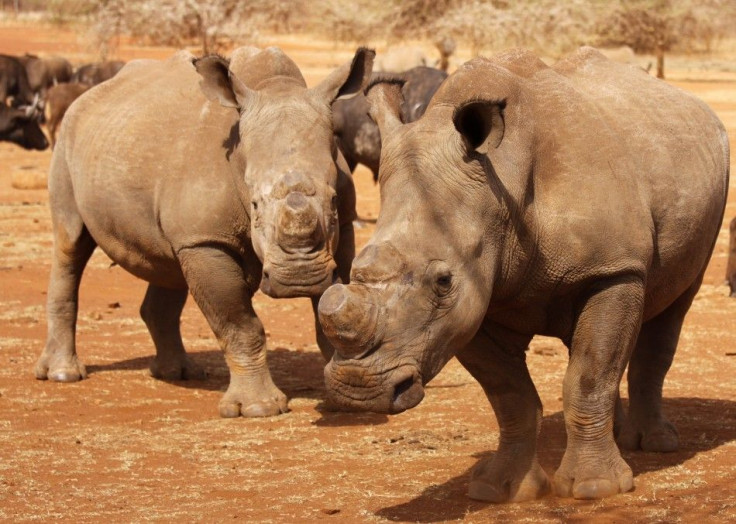The Great Rhino Rescue: African Communities Band Together To Stop Horn Poaching

If it weren't for a few dedicated communities in isolated locales -- like the Mkomazi Game Reserve in Tanzania, not far from the Indian Ocean -- one of Africa's most unique assets could be at risk of disappearing forever.
Mkomazi covers more than 1,200 square miles in northeastern Tanzania. Within those borders is a 21-square-mile enclosure, circled by electric fences and guarded by armed Tanzanians.
And inside that fence are 15 rhinoceroses, with more on the way if all goes according to plan.
Tony Fitzjohn, who runs the sanctuary along with his wife Lucy, is in charge of maintaining population growth and protecting these animals from the poachers that have been increasingly aggressive in recent years.
"Do whatever you can, whatever it takes, whatever it costs," Fitzjohn said to the Telegraph. "Otherwise we lose another species, and it happens to be a fairly big one, and a fairly old one... You have your flagship species for a reason. Take the elephants and the rhinos out of the eco system and you'll be left with a few billion gazelles running round -- and suddenly this huge great wonder of the world will be destroyed in front of us."
For the time being, there are five species of rhino on earth. Three are native to Asia -- most of those are in Indonesia and India. In Africa, there are black rhinos and white rhinos.
These two species are actually of similar hues, but black rhinos are smaller and tend to move independently rather than in herds. They are therefore easier to poach -- only about 5,000 are left on the continent, according to the South African newspaper Mail & Guardian. The white rhinos in Africa number around 21,000.
Poaching has been a problem for decades now, but a recent increase in awareness has led to more conservation initiatives, and the problem was actually improving -- until very recently.
Now that resource-hungry China has established a stronger trade relationship with Africa, a new demand for rhino horns has cropped up in Asian markets. As a result, hundreds of rhinos have been killed by poachers this year so far. A kilogram of rhino horn shavings can fetch about $8,000 today, according to the Mail &Guardian. In 2006, it was worth less than $1,000.
Part of the problem has to do with simple misinformation -- rhino horn is in demand in Asia for all the wrong reasons. The substance, which is similar in composition to human fingernails, is purported to have myriad medicinal properties. Some say it can cure headaches; others report it can cure cancer; still others think it prevents hangovers.
None of this is true, according to numerous scientific studies that have been done over the past several years. But old habits die hard. Over the last half century, 96 percent of Africa's rhino population has been wiped out.
The risks to the environment and biodiversity are clear, but this is a social problem as well -- especially as horn trading evolves to become a more sophisticated criminal industry. Established networks tend to encourage crime, and they often lead to higher levels of weapons possession. This poses a threat to communities on both sides of the trade -- the places where rhino horns are poached as well as the markets where they are ultimately sold.
That's why concerned citizens near the scenes of the crime are taking action. In South Africa, where poaching has seen a huge increase over the past year, a group of traditional chiefs in KawZulu-Natal is participating with local companies and the government to increase awareness, using billboards, marches and a text message donation program.
Conservation authorities are also working to maintain rhino populations in Namibia, Kenya and Zimbabwe.
And in Tanzania, Fitzjohn and his armed guards are keeping a close eye on their growing sanctuary population. To him, solving the problem is a simple matter of foresight.
"There's plenty of room for animals; there's plenty of room for people, too," said Fitzjohn. "It just needs a bit of management and central government control."
© Copyright IBTimes 2024. All rights reserved.












